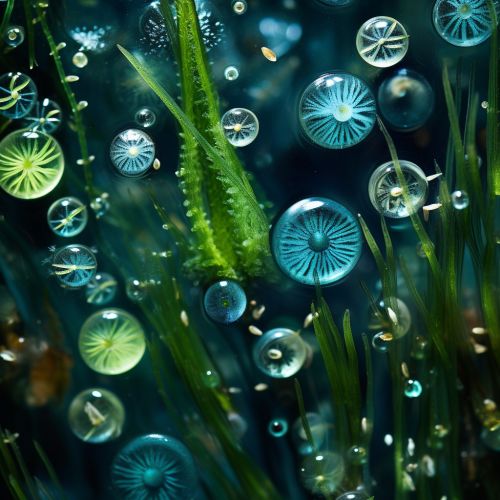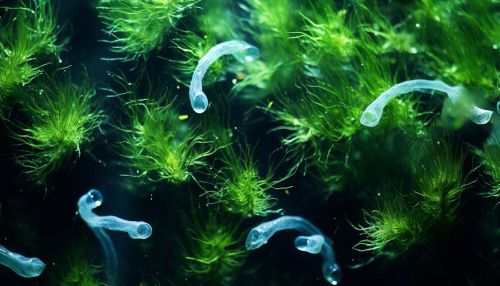Mechanisms of Iron Acquisition in Marine Phytoplankton
Introduction
Iron is an essential nutrient for all forms of life, including marine phytoplankton. It plays a crucial role in various metabolic processes such as photosynthesis, respiration, and nitrogen fixation. However, iron is often present in low concentrations in the ocean, making it a limiting nutrient for phytoplankton growth. This article discusses the various mechanisms that marine phytoplankton employ to acquire iron from their environment.


Iron in the Marine Environment
Iron exists in the marine environment in both dissolved and particulate forms. The dissolved form includes both inorganic iron (Fe(III) and Fe(II)) and organic iron complexes. The particulate form of iron includes biogenic particles, lithogenic particles, and colloidal iron. The availability of these different forms of iron to phytoplankton varies greatly, with dissolved iron generally being more bioavailable than particulate iron.
Iron Uptake Mechanisms
Marine phytoplankton have evolved a variety of strategies to acquire iron from the marine environment. These include direct uptake of dissolved iron, uptake of iron bound to organic ligands, and uptake of iron from particles.
Direct Uptake of Dissolved Iron
Phytoplankton can directly take up dissolved inorganic iron from seawater through specialized iron transport proteins located on their cell surface. These proteins bind to the iron ions and transport them across the cell membrane into the cell. This process is energy-dependent and is regulated by the iron status of the cell.
Uptake of Iron Bound to Organic Ligands
In addition to inorganic iron, phytoplankton can also take up iron that is bound to organic ligands. These ligands are small organic molecules that bind to iron ions and increase their solubility in seawater. Phytoplankton can take up these iron-ligand complexes through a process known as ligand-mediated iron uptake. This involves the binding of the iron-ligand complex to a specific receptor on the cell surface, followed by the transport of the complex into the cell.
Uptake of Iron from Particles
Phytoplankton can also acquire iron from particulate sources. This can occur through the process of phagotrophy, where the phytoplankton cell engulfs the particle and digests it internally to release the iron. Alternatively, phytoplankton can release extracellular enzymes that dissolve the iron from the particle surface, allowing it to be taken up by the cell.
Iron Storage and Regulation
Once inside the cell, iron is either used immediately in metabolic processes or stored for later use. Iron storage in phytoplankton is primarily in the form of ferritin, a protein that can store a large number of iron ions in a safe and bioavailable form. The level of ferritin in the cell is regulated by the iron status of the cell, with more ferritin being produced when iron is abundant.
Phytoplankton also have mechanisms to regulate their iron uptake in response to changes in iron availability. These include changes in the expression of iron transport proteins and changes in the rate of iron uptake. These regulatory mechanisms help to ensure that the cell maintains an appropriate balance of iron, avoiding both iron deficiency and iron toxicity.
Conclusion
Iron acquisition is a critical aspect of the survival and growth of marine phytoplankton. Despite the low concentrations of iron in seawater, phytoplankton have evolved a variety of mechanisms to acquire iron from their environment. These mechanisms include direct uptake of dissolved iron, uptake of iron bound to organic ligands, and uptake of iron from particles. Understanding these mechanisms is important for understanding the role of iron in marine ecosystems and the global carbon cycle.
